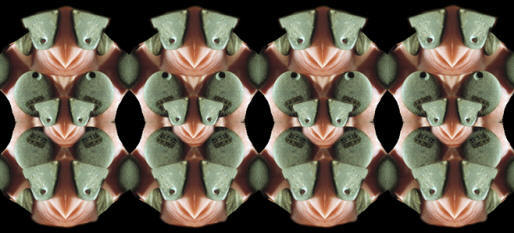|
||
|
||
|
"The universal
human habit of ornamenting the body to communicate gender, social
status, group affiliation, and other information about the wearer
appears to have sprung into being at the beginning of the Upper
Paleolithic."---1986, James Shreeve, "The
Neandertal Enigma," p. 320.
Humans have been wearing jewelry for tens of thousands of years. Even some Late Neanderthal sites have produced items of personal adornment in the form of pierced teeth and beads. An Early Stone Age site in South Africa at Border Cave has revealed some of the earliest jewelry in the form of beads. They date somewhere between 45,000 and 33,000 years ago. The earliest use of ornaments are interpreted as indicating a newly emergent personal and social awareness. |
||
|
It would be difficult to say for sure why any one individual from the distant past would wear a particular type of ornamentation. Frederick Hodge wrote in 1912, "The motive of personal adornment, aside from the desire to appear attractive, seems to have been to mark individual, tribal, or ceremonial distinction." Items worn might represent the individuals religion, culture or a society within the culture. Some forms of jewelry, that are represented in the form of teeth or claws from large carnivores, might represent a badge of honor. Other items worn might be seen to contain special magical powers. Or, as with most modern-day jewelry, it's worn to look better or exhibit wealth. |
||
|
||
|
Most of the items of personal adornment produced by Stone Age cultures in North America are in the form of beads, pendants and gorgets. The majority of these artifacts were made from organic materials such as shell, bone, teeth and claws. Stone is the most durable and long lasting material but not as easy to work as shell or bone. In the U.S., the most elaborate and artistic stone beads were made in the southeast by the Poverty Point culture. |
||
|
The simplest type of stone pendants are represented by small natural pebbles that have been drilled near one edge. All of the drilled pebble pendants in this article were found on sites in Illinois. Most of them were found by two individuals who surface collected on several different sites for many years. So it appears that pebble pendants are not as commonly found as many other types of stone artifacts. |
||
| CONTINUE ON TO PAGE TWO | ||
|
"REFERENCES"
1910, Moorehead,
Warren K., "The Stone Age In North America," p. 329. |
||





